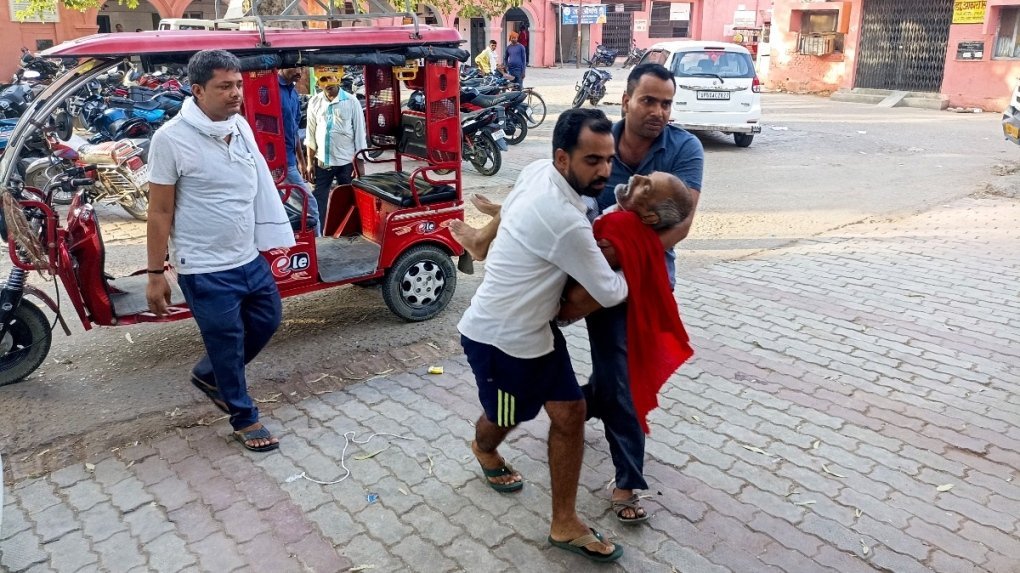Officials reported that a devastating heat wave has claimed the lives of at least 96 people in two of India’s most populous states over the past few days.The casualties occurred in Uttar Pradesh, located in the north, and Bihar, in the east, where authorities issued warnings urging residents over 60 and those with pre-existing health conditions to stay indoors during the daytime.
In Uttar Pradesh, all 54 fatalities were recorded in Ballia district, approximately 300 kilometers southeast of Lucknow, the state capital. It was discovered that most of the deceased individuals were over 60 years old and had pre-existing health issues that may have been exacerbated by the extreme heat. Over the past three days, around 300 patients were admitted to the district hospital in Ballia for various ailments aggravated by the high temperatures. Medical personnel in the district had their leave canceled, and additional beds were provided in the emergency ward to handle the surge in patients.
The majority of admitted patients were elderly, experiencing symptoms such as high fever, vomiting, diarrhea, breathing difficulties, and heart-related problems.
Residents of Ballia, including R.S. Pathak, who lost his father on Saturday, expressed their shock at the unusually high number of patients flooding the hospital’s emergency ward. Pathak remarked, “This has never happened in Ballia. I have never seen people dying because of the heat in such large numbers. People fear venturing out. The roads and markets are largely deserted.”
Ballia, along with central and eastern parts of Uttar Pradesh, is currently grappling with oppressive heat. On Sunday, the district experienced a maximum temperature of 43 degrees Celsius, surpassing the normal range by five degrees. The relative humidity, at 25 percent, intensified the impact of the heat. Atul Kumar Singh, a scientist from the India Meteorological Department (IMD), warned that temperatures across the state were above normal and that no relief was expected within the next 24 hours.
The IMD issued an alert stating that heat wave conditions would persist until June 19 in certain parts of Uttar Pradesh. The state’s health minister, Brijesh Pathak, announced an investigation into the cause of the “unusual number of deaths” in Ballia.
Meanwhile, in eastern Bihar, scorching heat has engulfed the majority of the state, resulting in 42 deaths in the past two days. Of the fatalities, 35 occurred at two hospitals in the state capital of Patna, where over 200 patients suffering from diarrhea and vomiting were being treated. Patna recorded a maximum temperature of 44.7 degrees Celsius on Saturday.
The summer months of April, May, and June are typically the hottest in most parts of India before monsoon rains bring relief. However, temperatures have become increasingly intense over the past decade. Heat waves in the country often lead to severe water shortages, with tens of millions of people lacking access to running water.
A study conducted by the academic group World Weather Attribution found that a scorching heat wave in April, which affected parts of South Asia, was at least 30 times more likely to occur due to climate change.
In April, extreme heat resulted in the deaths of 13 people at a government event in Mumbai, India’s financial capital, and led some states to close schools for a week.


